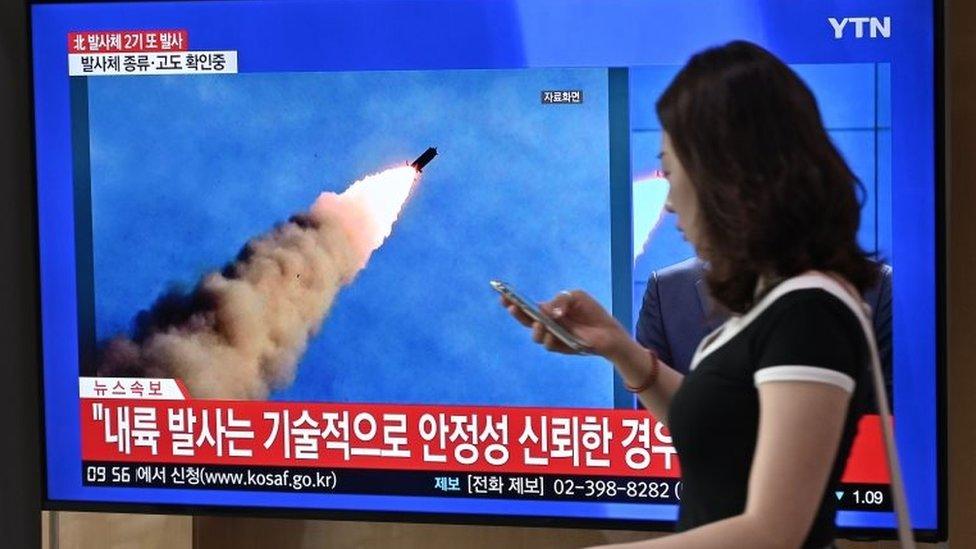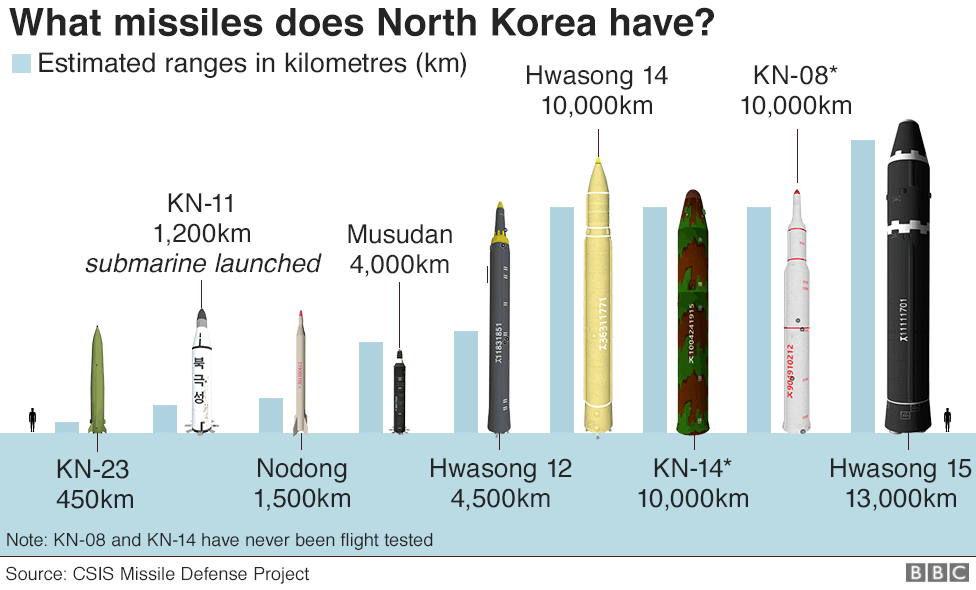North Korea may have fired missile from submarine
- Published

After a hiatus, North Korea has resumed missile launches in recent months (file picture)
North Korea may have fired a ballistic missile from a submarine, a move that came just hours after Pyongyang said it would resume nuclear talks with the US.
South Korean officials said a missile launched near the port of Wonsan flew about 450km (280 miles) and reached an altitude of 910km, before landing in the Sea of Japan.
If confirmed, this would be a significant escalation from the short-range tests it has conducted since May.
The news sparked swift condemnation.
Japanese Prime Minister Shinzo Abe said it was a violation of United Nations Security Council resolutions which ban North Korea from the use of ballistic missile technology.
Just hours earlier, Pyongyang had said denuclearisation talks with Washington could finally resume later this week.
The nuclear word Trump and Kim can't agree on
Negotiations have been stalled since the Hanoi summit between US President Donald Trump and North Korean leader Kim Jong-un in February ended without an agreement.


This is the longest-range North Korean missile test for a considerable period. It was fired in a high, lofted flight path, reaching an altitude of some 910km. But if fired on a normal trajectory, experts believe it would have had a range of some 1,900km.
It was fired from some kind of underwater platform, possibly a submarine but more likely a specially designed test-rig or barge.
It is a reminder that North Korea is making significant progress with its submarine-launched ballistic missile programme, seen as especially threatening because of the difficulty of finding and tracking boats in the deep ocean.
Coming just ahead of the resumption of nuclear talks between US and North Korean officials, it's a reminder that Pyongyang believes that it is negotiating from a position of strength - and must raise further doubts about obtaining any credible constraints on the development of its nuclear arsenal.

Experts said the proximity of the test and the talks announcement was deliberate.
"North Korea wants to make its negotiating position quite clear before talks even begin," Harry Kazianis of the Center for the National Interest in Washington DC told the AFP news agency.
"Pyongyang seems set to push Washington to back off from past demands of full denuclearisation, for what are only promises of sanctions relief."
What happened with the missile?
The first reports came in the early hours of the morning when authorities reported that two missiles had been launched, with at least one landing in Japanese waters.
Later Japan's Chief Cabinet Secretary Yoshide Suga said at a news conference that one ballistic missile may have split into two before falling into the water.

Wednesday's launch would be the 11th missile test from North Korea this year, but authorities have expressed particular concern at the apparent range and capabilities of this one.
North Korea had been developing submarine-launched ballistic missiles technology for some time before it halted all long-range missile testing.
South Korea's National Security Council expressed concern about the test and said it was placing "weight on the possibility" that it was a submarine-launched ballistic missile (SLBM), South Korea's Yonhap news agency reported.
The last SLBM tested by the North is thought to have taken place in August 2016, before President Trump even took office.
Two years later President Trump and President Kim made history by becoming the first sitting US president and North Korean leader to meet.
But despite two further face-to-face meetings, there has been little progress towards any agreement on what to do about the North's nuclear capabilities.
- Published5 September 2023
